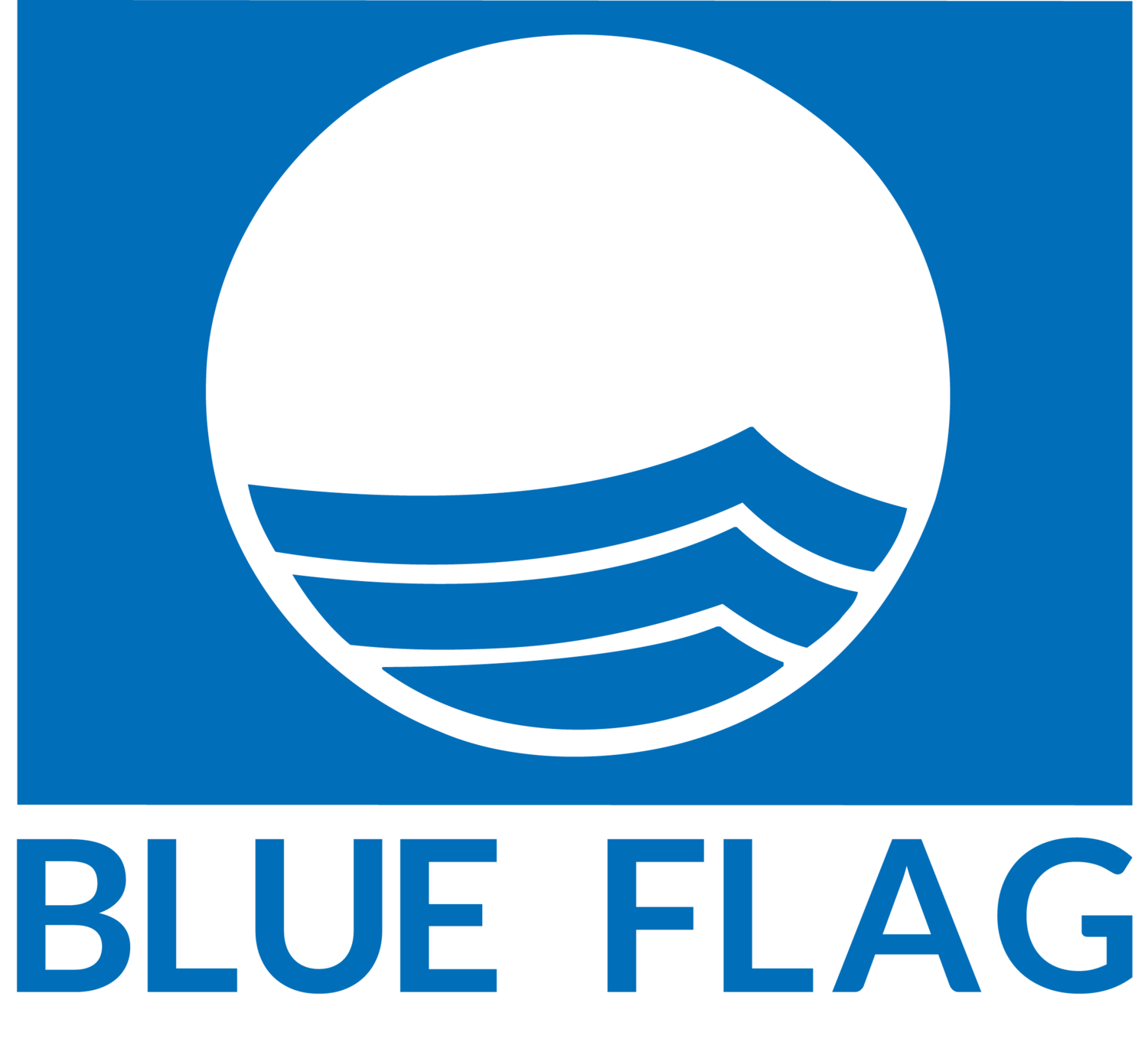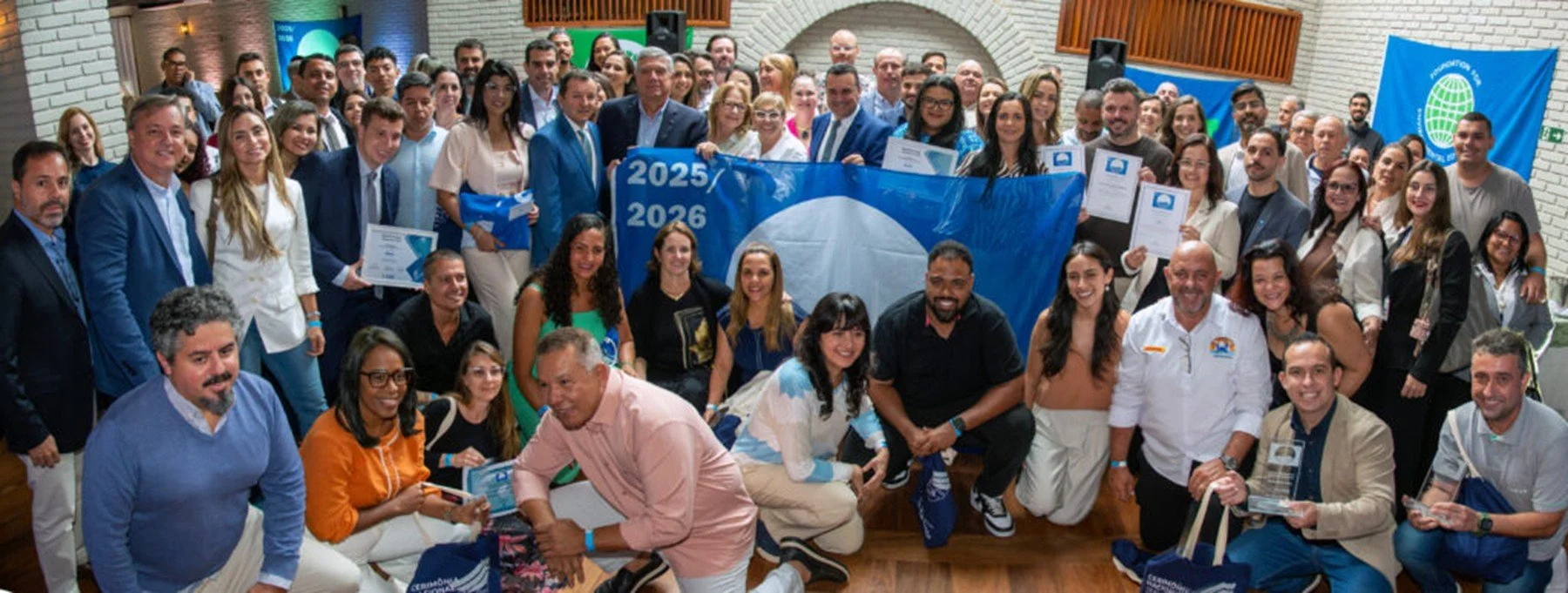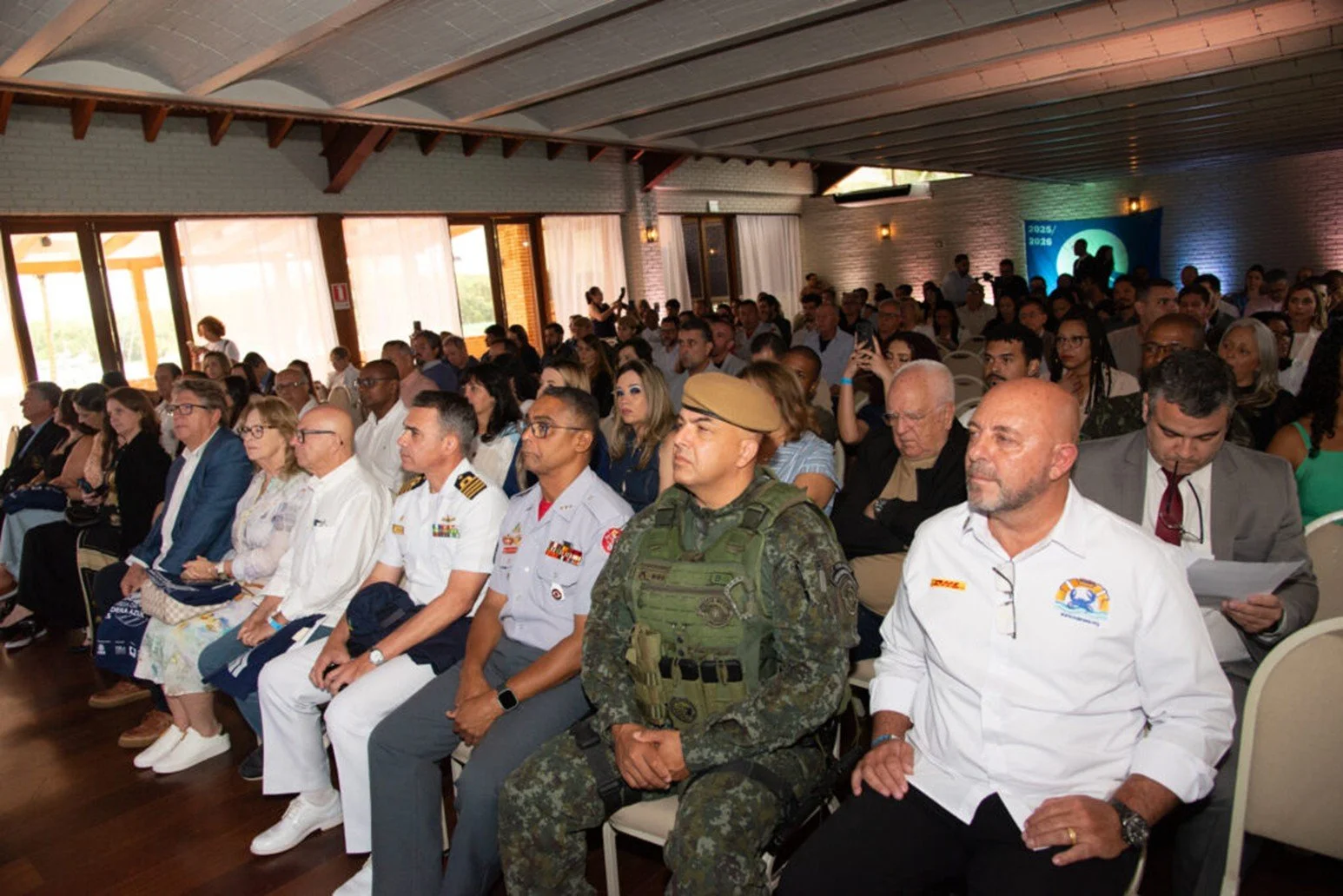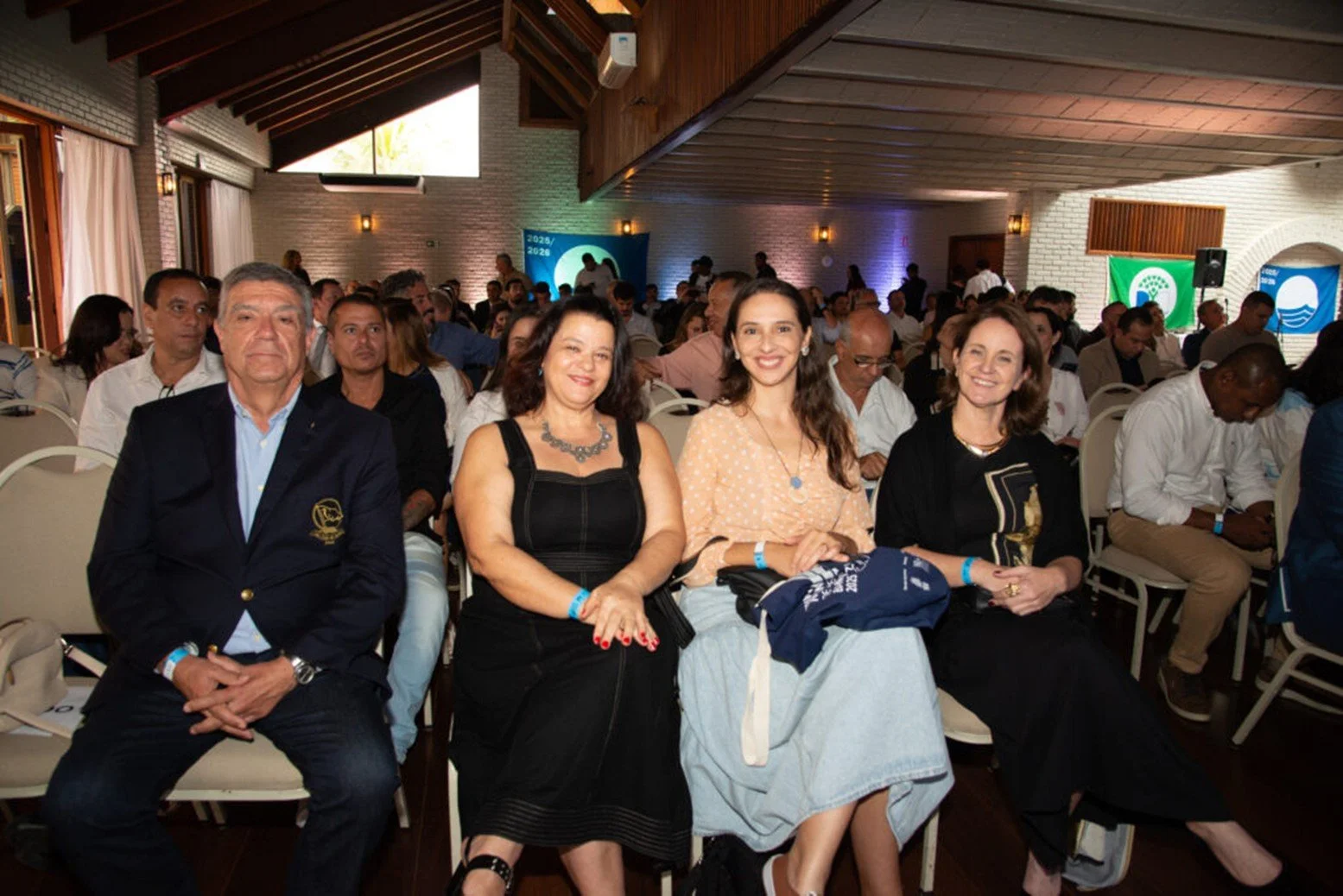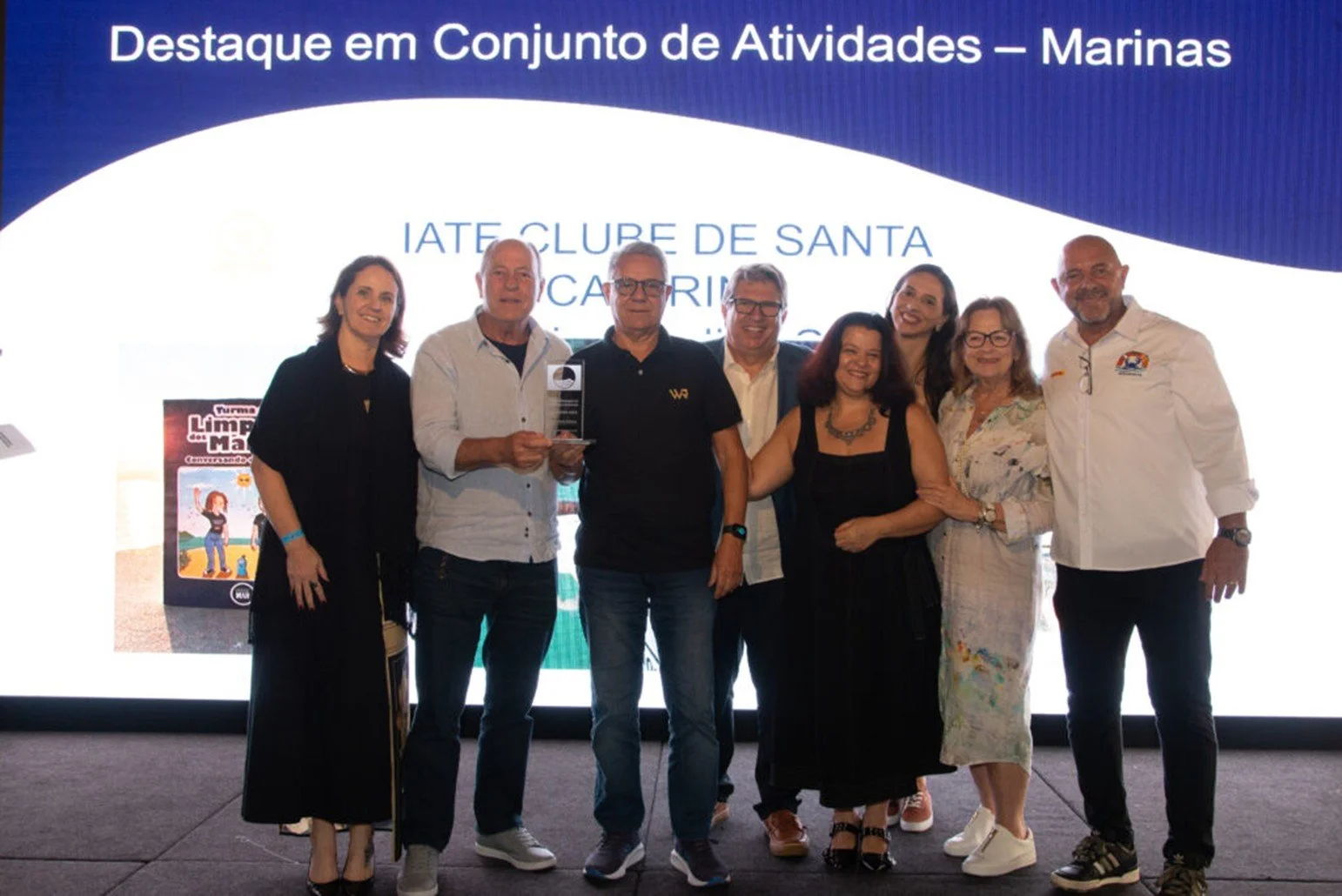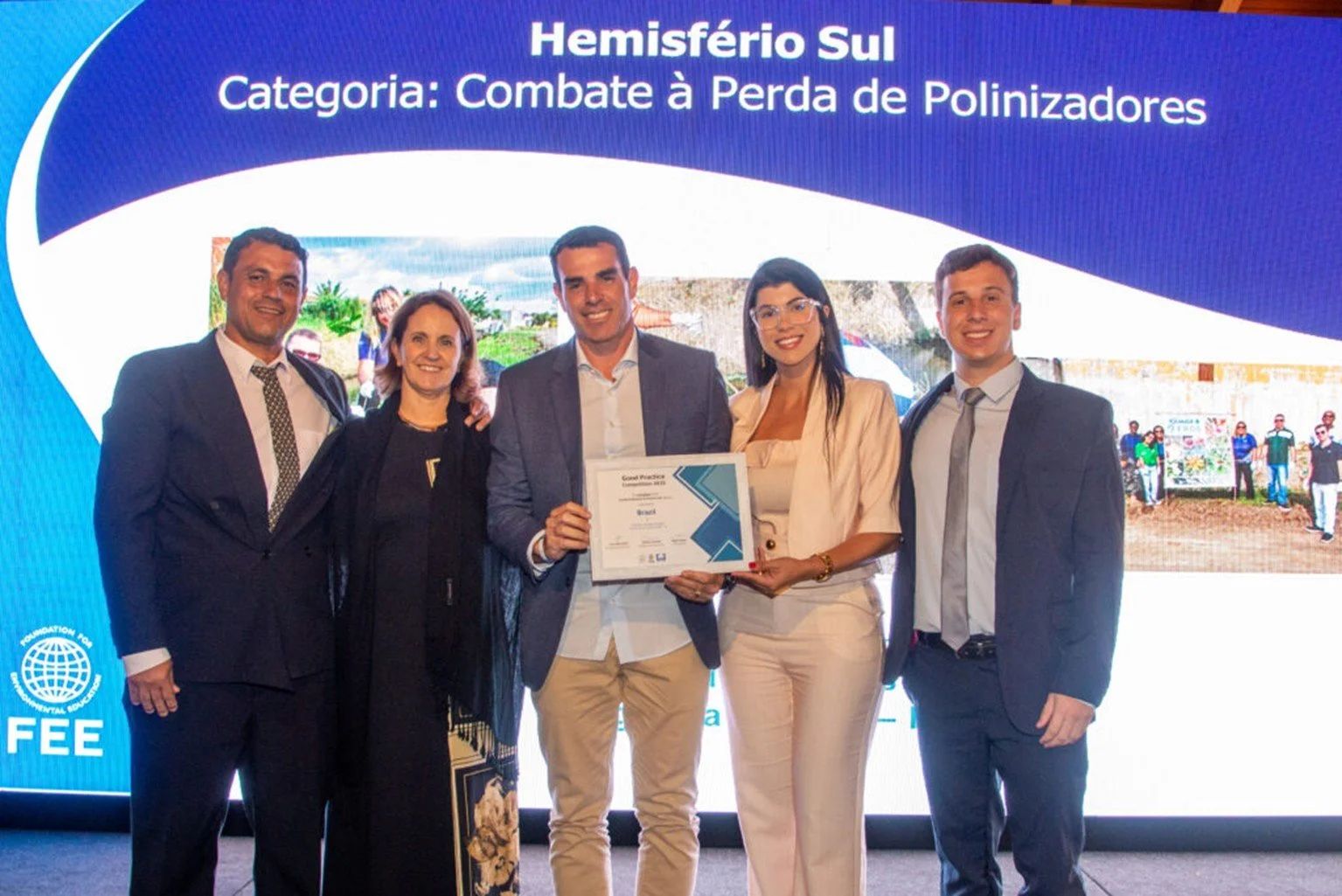Held at the Iate Clube de Santos, the event marked the beginning of the 2025/2026 season and recognized beaches and marinas for their environmental excellence and commitment to sustainable tourism.
The municipality of Guarujá, on the coast of São Paulo, hosted on October 31 the National Blue Flag Award Ceremony 2025, an event that officially marked the beginning of the new season of the program for the awarded destinations across five Brazilian states. Held at the Iate Clube de Santos, one of the country’s most traditional nautical clubs, the gathering brought together local authorities, mayors, environmental and tourism secretaries, as well as representatives from environmental organizations from all over Brazil. In this edition, 60 Brazilian destinations were approved by the national and international juries of the Blue Flag Program and will have the right to hoist the flag that symbolizes environmental quality, responsible management, and the promotion of sustainable tourism along the Brazilian coast.
Destinations from five states were recognized this season. The geographic distribution of the 2025/2026 Blue Flag includes six locations in the Northeast, one in Alagoas and five in Bahia. In the Southeast, there are 23 approvals, 19 in Rio de Janeiro and four in São Paulo. Santa Catarina, meanwhile, consolidates its position as the state with the largest number of awarded destinations, totaling 31 sites.
The mayor of Guarujá, Farid Madi, celebrated the award for Praia do Tombo, now reaching its 16th consecutive season with the Blue Flag award. “It is a great joy to host the national Blue Flag ceremony here in Guarujá. Praia do Tombo reaches its 16th season with the award, being the oldest in South America, and this fills our city with pride. This recognition reaffirms Guarujá’s commitment to sustainability, environmental quality, and the well-being of those who live in and visit our coastline. Hosting this national ceremony here makes the moment even more special,” the mayor highlighted. “For the Iate Clube de Santos, it is an honor to host this national ceremony and celebrate, together with the awarded destinations, the commitment to sustainability and the preservation of our seas. The award is a symbol of excellence, but also of collective responsibility. Here in Guarujá and at the club, we work to maintain an environmental management standard that inspires other clubs and coastal communities to follow the same path. Hosting this event reinforces our mission of promoting the conscious and sustainable use of the marine environment,” said Odoardo Lantieri, environmental manager and representative of the Iate Clube de Santos in Guarujá. The executive director of Instituto Ambientes em Rede, the organization responsible for promoting the program in Brazil, also celebrated the awarded destinations: “Behind each hoisted flag, there is a committed team, an engaged community, and a constant effort to make a difference. The Blue Flag recognizes precisely the work of those who believe sustainability is not a distant concept, but something built daily, through responsible decisions. In this edition, we have destinations from five states — Alagoas, Bahia, Rio de Janeiro, Santa Catarina, and São Paulo — that demonstrate, through concrete actions, that it is possible to align tourism development with environmental conservation. This achievement is the result of collective work involving public authorities, the private sector, and local communities, all united by the common purpose of ensuring a more sustainable future for our coastline,” said Leana Bernardi, who is also the national coordinator of the program in Brazil.
Environmental Education Recognition Award– National Jury
The municipality of Bombinhas, in Santa Catarina, was recognized for its set of Environmental Education activities for the third consecutive year, receiving the Environmental Education Recognition Award, granted by the National Jury of the Blue Flag Program, for the initiatives carried out during the 2024/2025 season on the beaches of Conceição, Mariscal, Prainha de Mariscal, Quatro Ilhas and Tainha. Also in the Beaches category, highlights included the activity “Ghost Fishing: Protection of the Marine Environment,” conducted at Praia do Peró in Cabo Frio (RJ), and the video entitled “Dissemination of Knowledge on Climate Change,” developed by the beaches of Bombinhas (SC). In the Marinas category, recognition went to the set of activities by the Iate Clube de Santa Catarina – Veleiros da Ilha, in Florianópolis (SC), and the initiative “The Path of Waste to the Sea,” promoted by Marina Kauai in Ubatuba (SP).
Good Practice Competition – International Jury
This year, the International Jury of the Blue Flag Program granted Brazil three Good Practice Competition awards. In the Climate Adaptation category, the Iate Clube de Santa Catarina won in the Southern Hemisphere with the activity “Visit to an Oyster Farm – Mariculture, Climate, and the Ocean Economy.” In the Pollinator Loss Prevention category, the project “Iguaba Mais Verde,” from Praia de Ubás in Iguaba Grande (RJ), took second place. In the same category, Praia do Patacho in Porto de Pedras (AL) was also awarded for the activity “Sustainable Paths, Inclusion, and Nature.”
Awarded beaches and marinas must annually demonstrate compliance with the criteria established by FEE – Foundation for Environmental Education, the international organization responsible for overseeing the program. The criteria cover aspects such as environmental and heritage management, water quality, environmental education, safety and services, sustainable tourism, and social
responsibility.
The National Blue Flag Award Ceremony 2025 was organized by Instituto Ambientes em Rede, in partnership with the Municipality of Guarujá and the Iate Clube de Santos, with sponsorship from Embratur and support from the Visite Guarujá Convention & Visitors Bureau. The official flag hoisting will take place starting November 1, marking the beginning of the summer season in the Southern Hemisphere.
Credits: Matheus Bonfim
